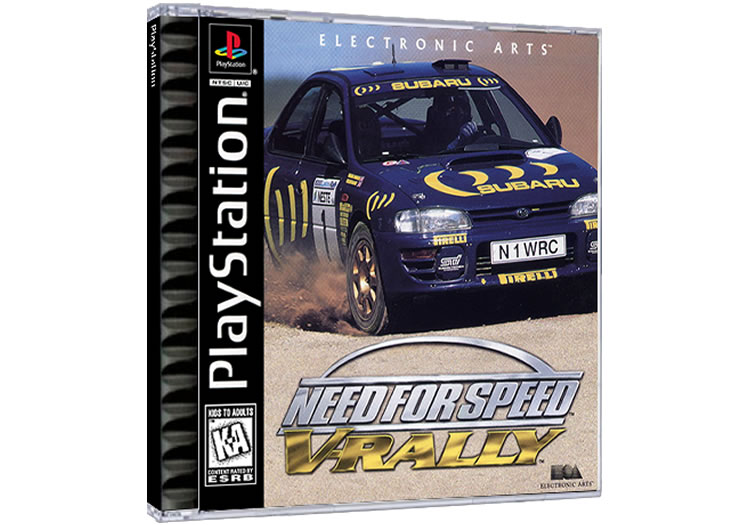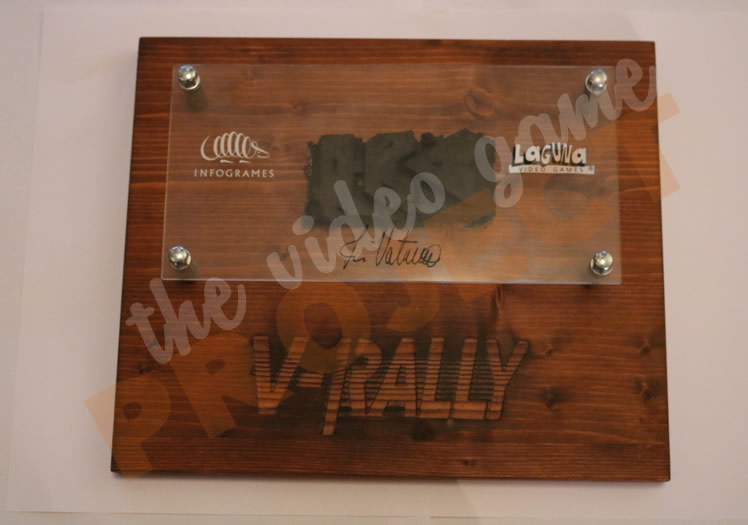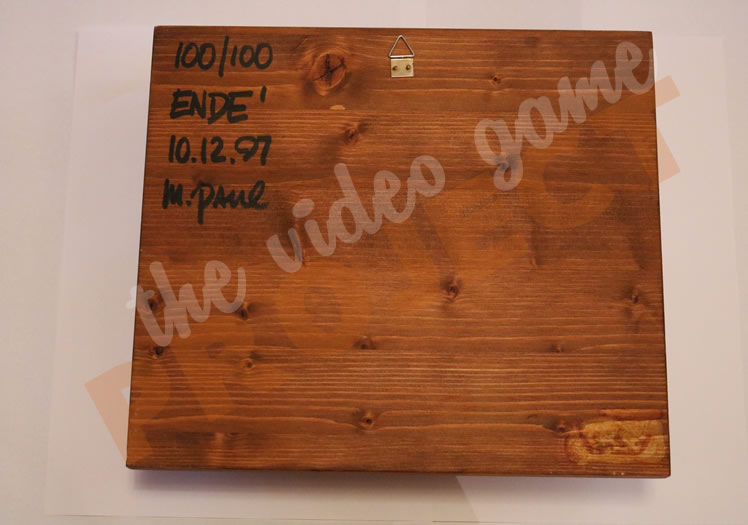The Video Game Project
A Closer Look At The Prototypes That Became Your Favourite Games!
V-Rally PlayStation One Press Kit
 V-Rally is a racing video game developed by Infogrames Multimedia and released for the PlayStation console in 1997. Players drive rally cars through a series of stages spread over eight different locations, ranging from European countries like England, Spain or Sweden, to island countries such as Indonesia and New Zealand. The game is based on the 1997 and 1998 World Rally Championship seasons, and features officially licenced cars and tracks inspired by real locations of rally events.
V-Rally is a racing video game developed by Infogrames Multimedia and released for the PlayStation console in 1997. Players drive rally cars through a series of stages spread over eight different locations, ranging from European countries like England, Spain or Sweden, to island countries such as Indonesia and New Zealand. The game is based on the 1997 and 1998 World Rally Championship seasons, and features officially licenced cars and tracks inspired by real locations of rally events.
The game places a strong emphasis on replicating the behavior physics of real cars and generally required more practice than usual arcade-style racers of the time. Aspects such as the weather conditions, road surfaces, and the drive wheel configurations all have a significant impact on the car handling. Weather conditions include rain and snow, while road surfaces range from asphalt to gravel or dirt and races can take place at night or daytime. V-Rally features both Kit Cars and World Rally Cars for players to choose from. Kit Cars are two-wheel drive and include the Peugeot 306 Maxi or Renault Maxi Megane, while World Rally Cars are four-wheel drive and include cars such as the Subaru Impreza WRC or Mitsubishi Lancer WRC. Before starting a race, players have the option to tweak their car setup with tighter suspensions, quicker gear ratios, understeer or oversteer sensitivity, and choice of manual or automatic transmission.
V-Rally features three gameplay modes: Arcade, Championship, and Time Trial. In Arcade, players race against opponents controlled by the game's artificial intelligence in three series of stages. You must complete each series in a linear fashion and its stages have multiple checkpoints that must be reached in a specified time. Players start with three credits and if they lose a stage or fail to reach a checkpoint, they will lose one credit. If the player runs out of credits, it's game over. However, there is the oportunity to get additional credits by winning individual stages. Championship is similar to Arcade, but stages have no checkpoints and players are awarded points based on the rank they finish courses. The game offers more than 40 stages spread over eight different locations, ranging from European countries like England, Spain or Sweden, to island countries such as Indonesia and New Zealand. Time Trial allows players to race on any stage and record the fastest lap time. All three modes support one or two players and if two players compete against each other, a split screen feature is used.
In Europe, V-Rally was a critical and commercial success, selling 15,000 copies during its first weekend of release. In the UK alone, the game was a bestseller for three months, and in August of 1998 received a "Gold" sales award from the Verband der Unterhaltungssoftware Deutschland, indicating sales of at least 100,000 units across Germany, Austria and Switzerland. As of November 1998, V-Rally had sold more than two million copies wordwide and even took home a "Gold" prize at the 1999 Milia festival in Cannes, for revenues above €22 million in the European Union during 1998.

Plaque - Front

Plaque - Back
V-Rally was developed for the PlayStation console by an Infogrames team based in Lyon, France. This team, composed of 20 full-time people, would later go on to be known as Eden Studios. Because the PlayStation development kits did not cover the requirements needed for the game, the developers decided to create their own programming tools, including the game engine. The game's environments and cars are fully rendered in 3D, while the Gouraud shading method was used to give 3D objects a smoother surface. All the cars that are featured in the game were officially licenced, including their stickers. Former rally world champion Ari Vatanen gave the developers insight on how the cars should handle collisions and drifts. Vatanen noted that, although each car practically features the same control concepts, there are significant differences between two-wheel drive and four-wheel drive vehicles. The game was designed to support the NeGcon controller by Namco, allowing players to steer their car around curves in an analog manner.
Originally, the game was intended to feature a level editor where players could create their own tracks by modifying variables such as road surface, road curves, and weather conditions. It would take the PlayStation between 30 and 60 seconds to render these tracks, which could be saved in a memory card. This option would allow players to update their game with additional tracks. Eventually, an editor would be included in the 1999 sequel V-Rally 2. Although the game's tracks are fictitious, they were inspired by real locations of rally events, such as the Rally Costa Brava in Spain. With the use of the PlayStation Link Cable, a 4 player multiplayer mode was initially planned. Similarly, developers considered the possibility of adding a rear-view mirror to the HUD (head-up display), but it was ultimately discarded due to the memory constraints of the PlayStation hardware. The game's hard rock score was recorded at the Moby Dick club in Madrid. The overall development of the game took almost two years to complete.
Based on the 1997 World Rally Championship, V-Rally was first released in Europe in July 1997 as V-Rally: 97 Championship Edition. In North America, the game was published by Electronic Arts and released on November 4, 1997 as Need for Speed: V-Rally. Although the game has no connection to the Need for Speed series, it is presumed that the reason for the title change was to draw more attention to the American market, as rallying is much more popular in Europe than in America. Unlike the European version, the American version includes the Toyota Corolla WRC as a new car. A Platinum version that supports the DualShock controller and includes the Toyota Corolla WRC was released in Europe in 1998 as V-Rally: Championship Edition.
Check out the episodes section for a much more in depth look at this press kit and the debug version of the game that came with it!